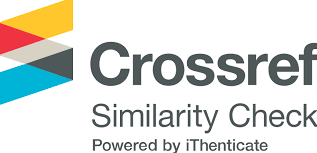SURVEY OF SPECIES COMPOSITION IN THE FAMILY (POACEA) AS FEED FOR LIVESTOCK IN CHIENG NGAN COMMUNE, SON LA CITY, SON LA PROVINCE
DOI:
https://doi.org/10.70169/VJFS.1079Keywords:
Chieng Ngan, ethnobotany, geographic factors, livestock food, Poaceae, Son LaAbstract
This study evaluated the species composition and use value of Poaceae plants with potential as animal feed in Chieng Ngan commune, Son La City, Son La province, by traditional botanical methods from carried out from July 2023 to June 2024. The results recorded 46 species belonging to 36 genera. Leaves are the most commonly used part. A total of 46 species are used for cattle and buffalo, 45 species for goats, and 2 species for pigs, with four methods of preparation: direct feeding, drying, cooking, and fermenting. Twelve species have a high utilization value (UI ≥ 0.90). The life form of plants for animal feed is built as follows: SB = 34.78Ph + 21.74Hm + 19.57Ch + 15.22Th + 8.70Cr. There are 5 main geographical factors: the highest is tropical, accounting for 63.04%; endemic to Vietnam, accounting for 15.22%, intertropical element 13.04%, cultivated plants accounting for 6.52% and the lowest is the paleotropic element 2.17%. The habitat of Poaceae plants is mainly with the highest number found in shifting cultivation fields (h) 27 species (accounting for 58.70%), followed by secondary forest (a) 18 species (accounting for 39.13%), grasslands (d) 15 species (32.61%), rice fields (g) 12 species (26.09), home garden (e) with 3 species (6.52%); limestone forest (b) and shrublands (c) with 2 species (4.35%).
References
1. Nguyễn Tiến Bân, 2005. Danh lục các loài thực vật Việt Nam (Tập 3). Nhà xuất bản Nông nghiệp, Hà Nội. 1248 trang.
2. Bộ Nông nghiệp và Phát triển nông thôn. Thông tư số 33/2018/TT-BNNPTNT ngày 16 tháng 11 năm 2018 quy định tiêu chí việc phân chia rừng.
3. Lê Trần Chấn, 1999. Một số đặc điểm cơ bản của hệ thực vật Việt Nam. NXB Khoa học và Công nghệ, 307 trang.
4. Pham Hoàng Hộ, 2000. Cây cỏ Việt Nam. NXB Trẻ, Tp. Hồ Chí Minh, tập 3, 1020 trang (597 - 735).
5. Nguyễn Danh Hùng, Trần Minh Hợi, Nguyễn Thị Hoài Thương, Đỗ Ngọc Đài, 2019. Sự đa dạng của thực vật Một lá mầm tại Khu bảo tồn thiên nhiên Pù Hoạt, tỉnh Nghệ An. Tạp chí Khoa học Tự nhiên và Công nghệ, Tập 35, Số 1, 83-89. DOI: 10.25073/2588-1140/vnunst.4843.
6. Vũ Thị Liên, Lừ Đức Hiếu, Lò Văn Định, Vì Văn Lâm, 2023. Thành phần loài và giá trị sử dụng thực vật Một lá mầm (Monocotyledone) làm thức ăn cho gia súc tại Khu Bảo tồn Thiên nhiên Mường La, tỉnh Sơn La. Tạp chí Khoa học Trường Đại học Tân Trào, tập 9. số 4, tr.141-147. DOI: 10.51453/2354.
7. Nguyễn Nghĩa Thìn, 2008. Các phương pháp nghiên cứu Thực vật, NXB Đại học Quốc gia Hà Nội, 165 trang.
8. Nguyễn Nghĩa Thìn, 2004. Đa dạng sinh học và tài nguyên di truyền thực vật, NXB Đại học Quốc gia Hà Nội, 363 trang.
9. Phạm Đức Thịnh, Nguyễn Tiến Chính, Vũ Thị Liên, Nguyễn Thành Sơn, 2024. Đa dạng thành phần loài và giá trị sử dụng cây thuốc được cộng đồng dân tộc Thái sử dụng tại xã Chiềng Mai, huyện Mai Sơn, tỉnh Sơn La. Tạp chí Khoa học Lâm nghiệp, tập 9. số 2, tr. 39 - 47.
10. Thái Văn Trừng, 1978. Thảm thực vật rừng Việt Nam. NXB Khoa học và Kỹ thuật, Hà Nội.
11. Ủy ban Nhân dân xã Chiềng Ngần. Kết quả thực hiện nhiệm vụ phát triển kinh tế - xã hội, quốc phòng - an ninh năm 6 tháng đầu năm 2024; phương hướng, nhiệm vụ 6 tháng cuối năm 2024. Số 148/BC- UBND, ngày 10 tháng 6 năm 2024.
12. De Lucena, R.F.P., E. de Lima Araujo & U.P. de Albuquerque, 2007. Does the local availability of woody Caatinga plants (North-Eastern Brazil) explain their use value? Economic Botany 61: 347-361.
13. Hodkinson TR., 2018. Evolution and taxonomy of the grasses (Poaceae): model family for the study of species-rich groups. Annual Plant Reviews 1, 1 - 39. http://onlinelibrary.wiley.com. DOI: 10.1002/9781119312994.apr0622.
14. Martin, G.J., 2004. Ethnobotany: A Methods Manual. Earthscan Publications Ltd., London, pp. 01.
15. Phillips, O. & A.H. Gentry, 1993. The useful plants of Tambopata, Peru: Statistical hypotheses tests with a new quantitative technique. Economic Botany 47: 15-32.
16. Plants of the World Online, 2024. [Online]. Available: https://powo.science.kew.org/.
17. Raunkiaer C., 1934., Plant Life Forms. Oxford: Clarendon Press, 632 pages.
18. Hoang Van Sam, Pieter Baas & Paul J.A. Kebler. 2008. Traditional medicinal plants in Ben En National park, Vietnam. BLUMEA 53: 569-601.
19. Soreng, R.J., Peterson, P.M., Romaschenko, K., 2017. A worldwide phylogenetic classification of the Poaceae (Gramineae) II: An update and a comparison of two 2015 classifications. Journal of Systematics and Evolution 55(4): 259-290. DOI: 10.1111/jse.12262.
20. Zhengyi W., 2006. Flora of China, Volume 22: Poaceae Beijing and St. Louis, MO: Science Press and Missouri Botanical Garden, 752 pages. DOI: 10.1093/aob/mcm014.









